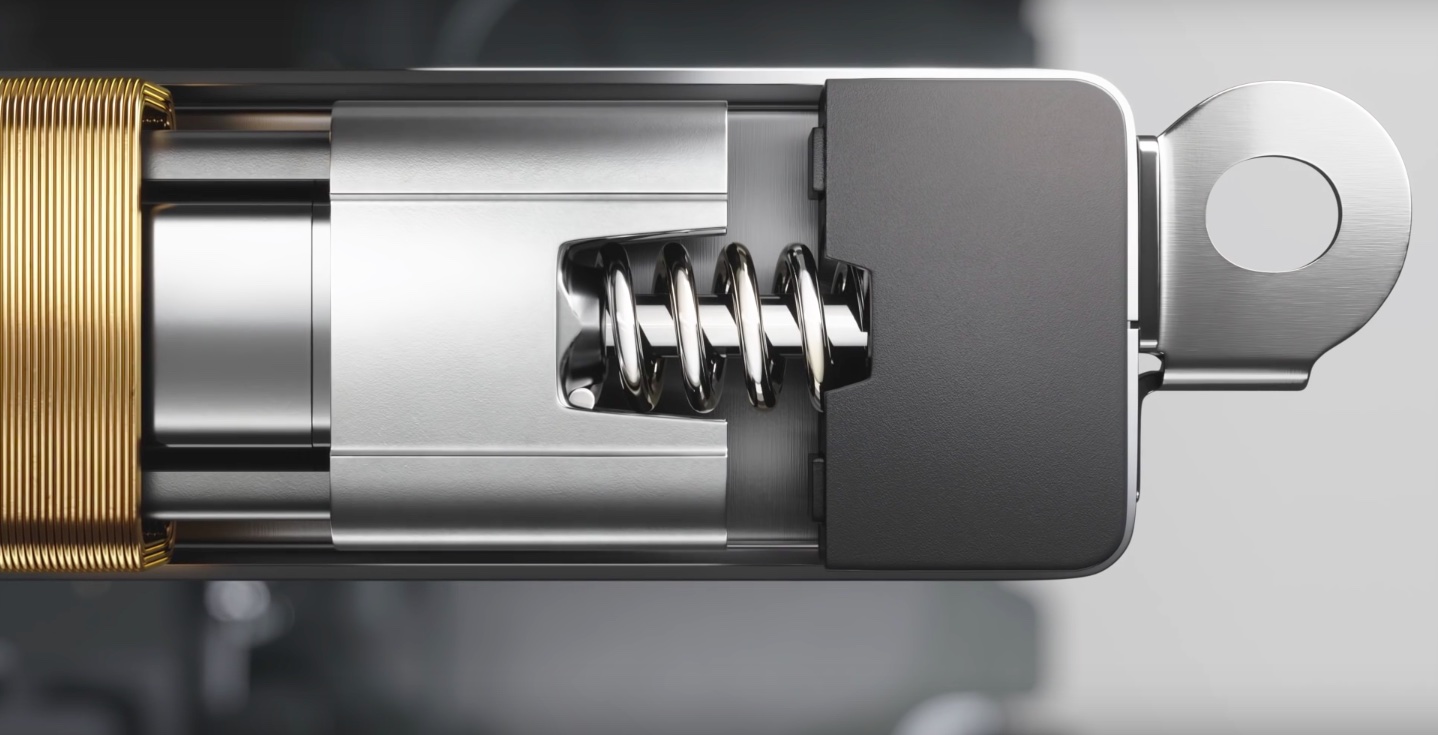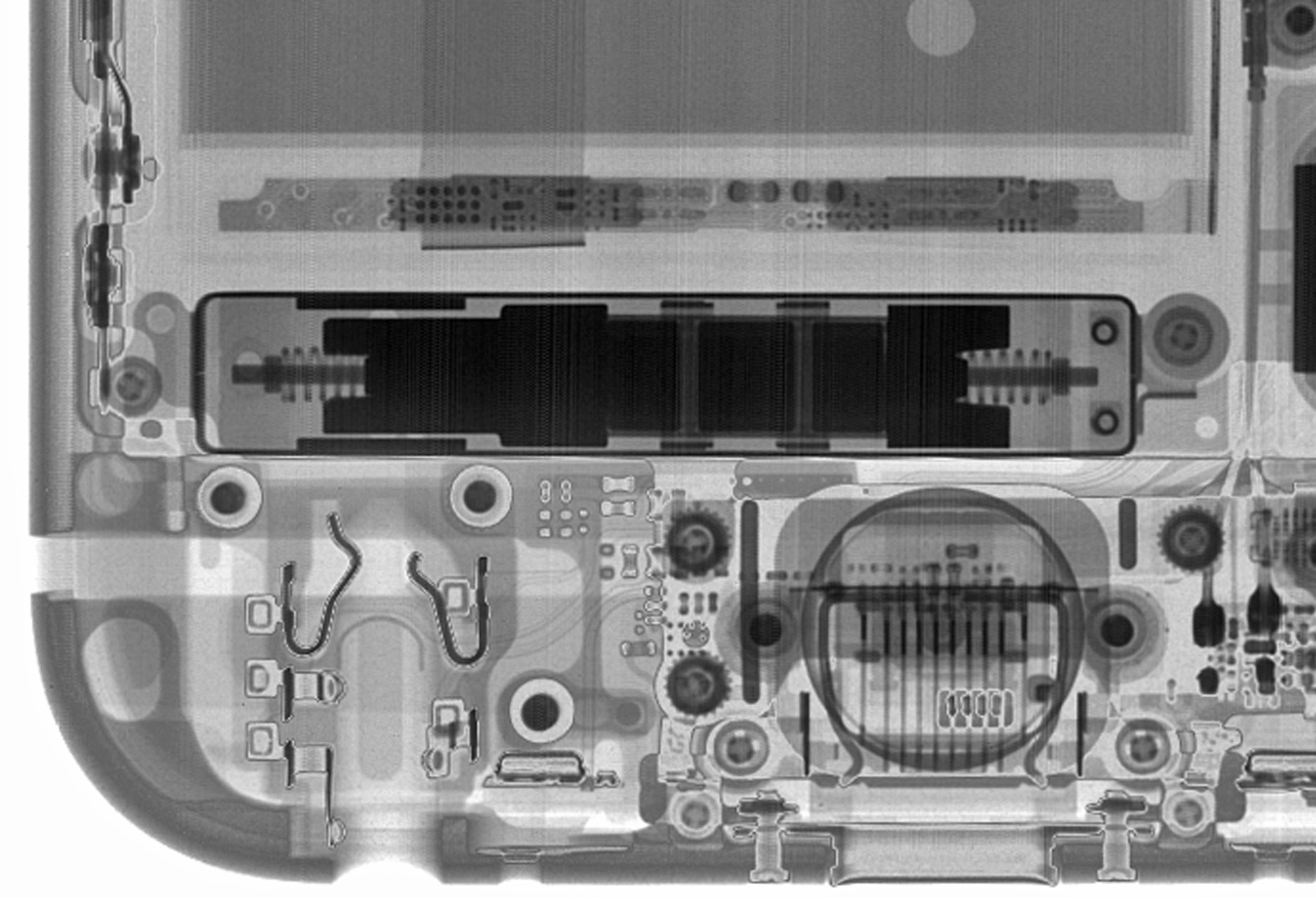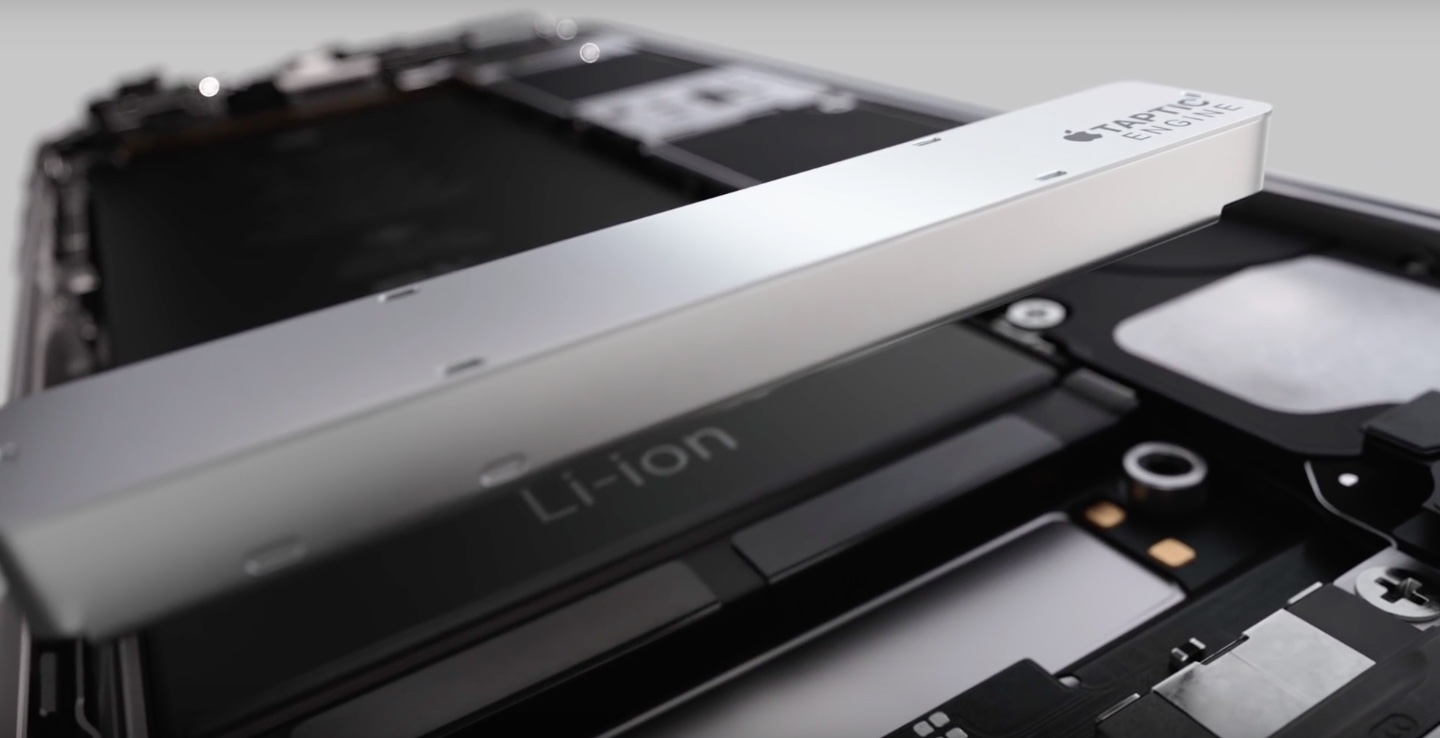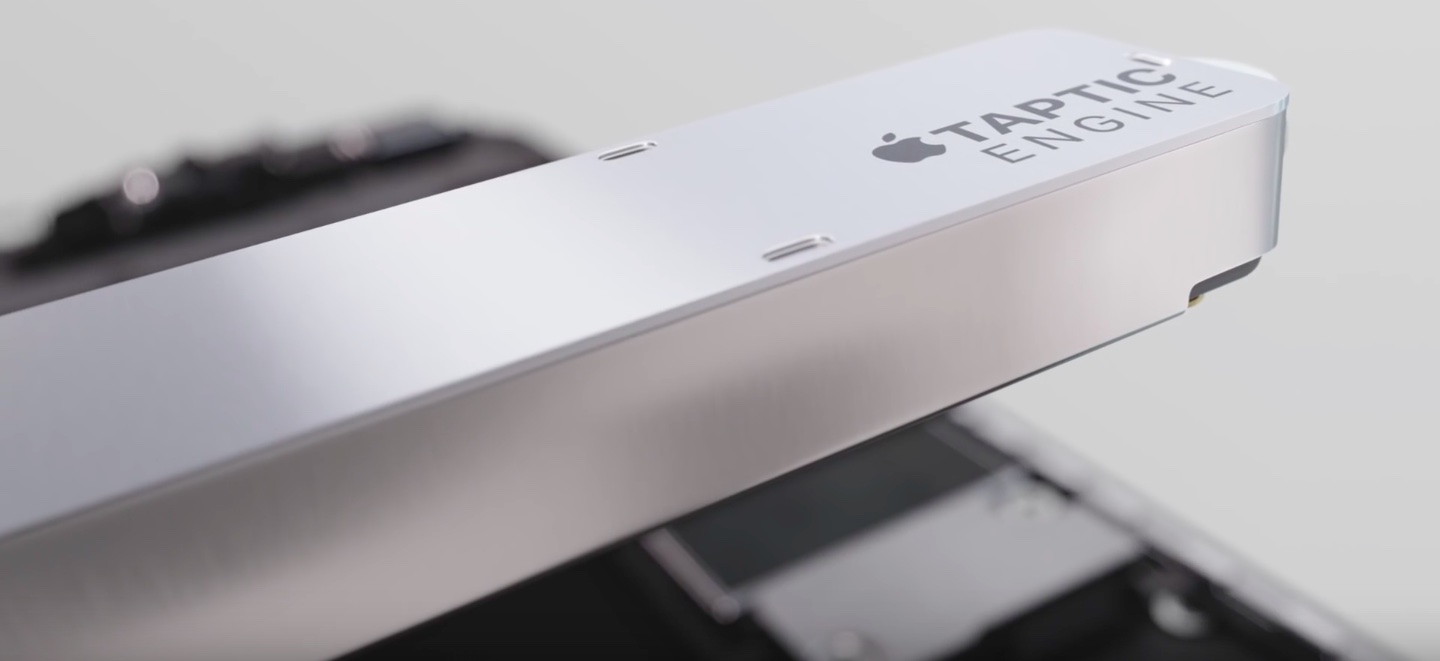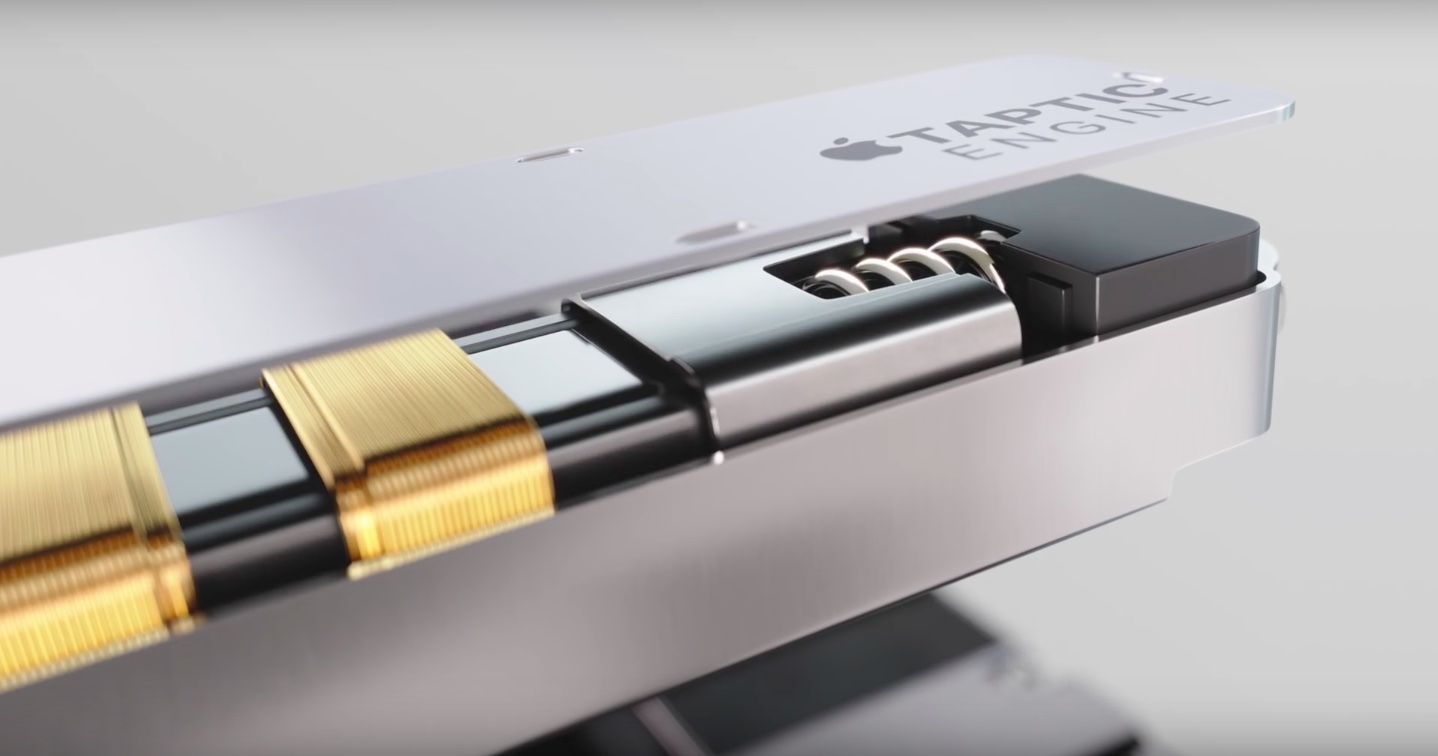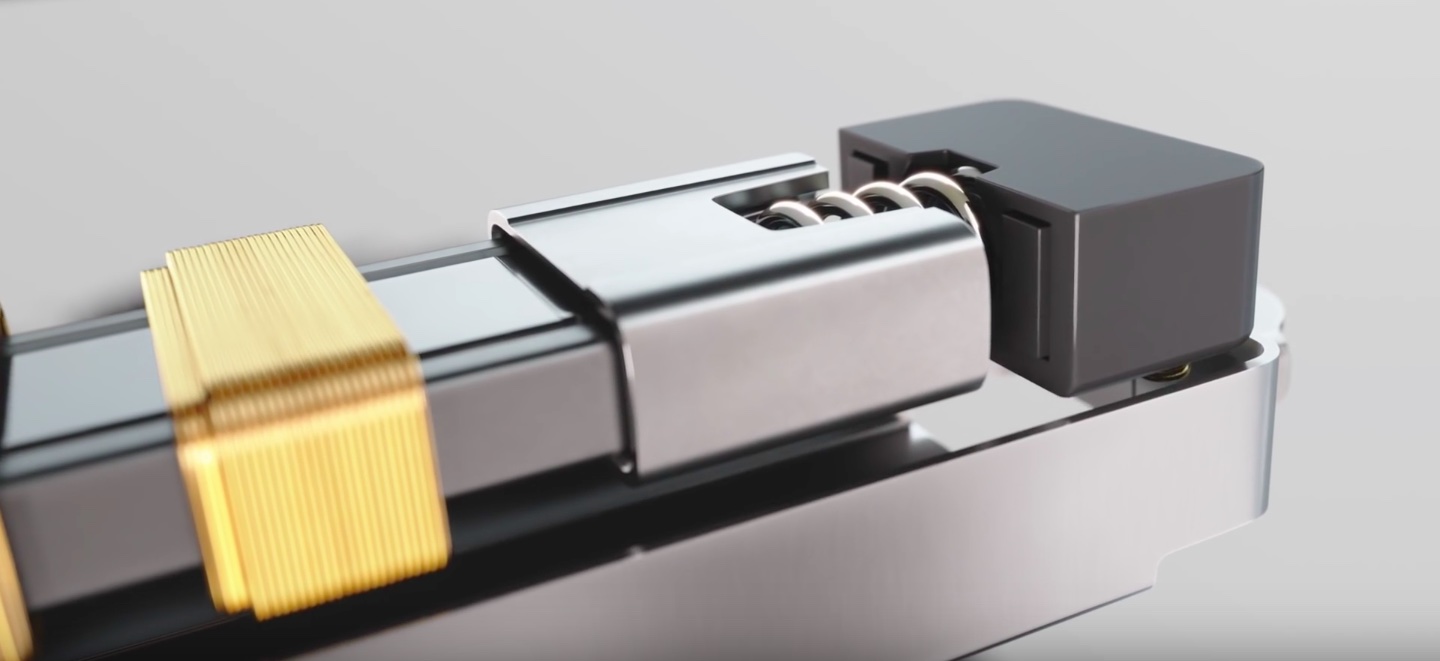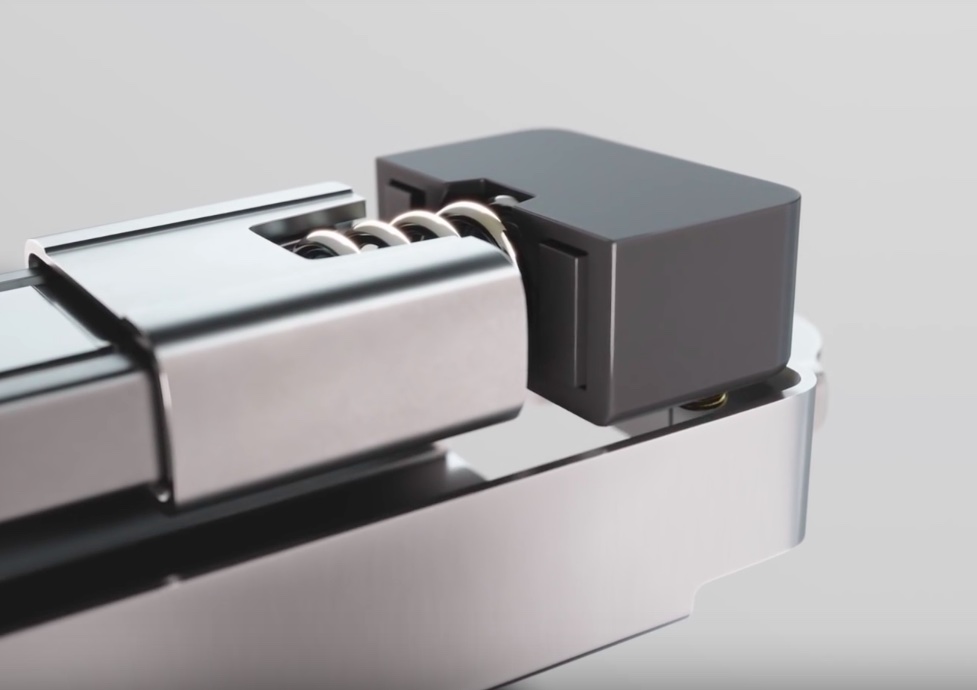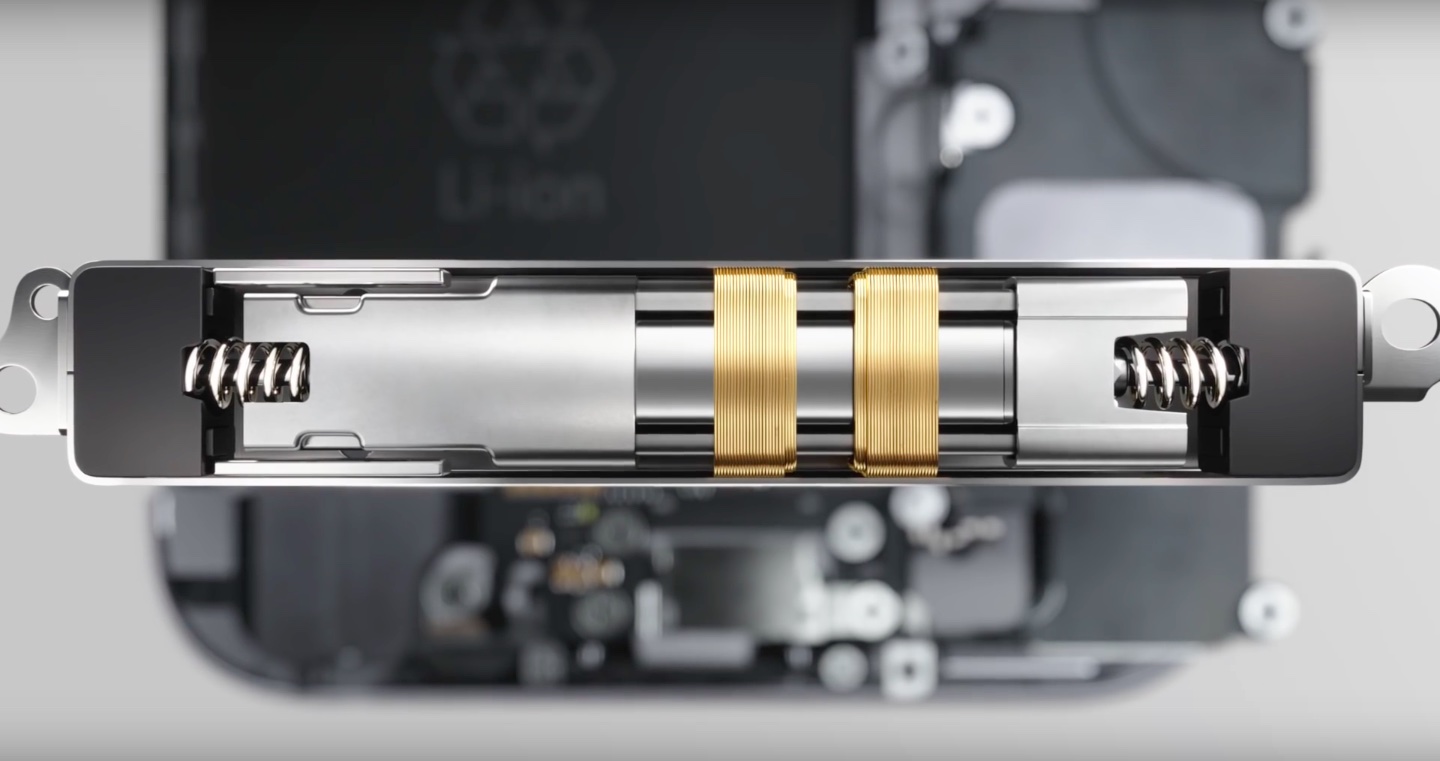When Apple says that a redesigned vibrator inside the iPhone 6s and iPhone 6s Plus, branded as the Taptic Engine, gives you “real-time feedback” in the form of subtle taps, the company is not exaggerating. The new oscillating mechanism, now enclosed with its own aluminum shell, reaches its full power in just one cycle (and stops just as quickly) versus ten or more oscillations for most other smartphones.
This allows for a more precise level of haptic feedback to accompany the new Peek and Pop deep-presses provided by 3D Touch. As part of iFixit’s detailed teardown analysis of the new iPhones, the repair wizards have blasted the Taptic Engine with X-rays to show it in action.
One speedy oscillator
iFixit contributes the slight iPhone 6s weight gain to the Taptic engine itself and the 15-gram heavier display assembly which uses an additional capacitive layer.
“The all-new Taptic Engine takes up a large chunk of space below the battery, which might explain the slight reduction in battery size,” said the firm.
And here it is in action.
And this is a blast of X-ray radiation revealing Apple’s new linear oscillating mechanism under the aluminum shell of its own. The shell itself has a few spring contacts and a big label complete with the Apple logo mark.
“That’s not Photoshopped for contrast—dense materials like magnets absorb more X-rays, so the haptic feedback mechanism looks dark and crisp compared to other materials, like the aluminum frame,” explains iFixit.
Due to 3D Touch and Taptic Engine taking up more space, the iPhone 6s has a smaller 1,715 mAh battery versus the 1,810 mAh cell in last year’s iPhone 6, although battery life has remained the same.
For those wondering, the new Taptic Engine replaces the traditional vibration motor in last year’s models. All told, the iPhone 6s earned a 7 out of 10 on iFixit’s Repairability scale, the same as last year’s model.
Why Taptic Engine matters
With a new dimension added to the iPhone’s user interface in the form of pressure-sensing 3D Touch technology, Apple had to create new ways of conveying Peek and Pop events to the user not just visually, but through a more precise level of haptic feedback.
Shorter, more distinct feedback events allow for more nuanced experiences. For example, a mini-tap (Peek) is conveyed to the user with a haptic feedback even lasting ten milliseconds.
If you press the screen further to pop into content, Taptic Engine produces a different feedback event. Same goes for the full tap, which lasts fifteen milliseconds.
Check out a few more scenes and dramatic closeups of the Taptic Engine taken from Apple’s ‘inside components’ promotional video for 3D Touch features of the new iPhone 6s.
It’s these haptic responses that let you know what actions you’re performing and what you can expect to happen. Again, these subtle taps from the much improved Taptic Engine are essential to providing taptic feedback in ways the old vibrator just wasn’t capable of.
In my view, Taptic Engine is one of the underrated features of the new iPhones and it’s essential for the seamless 3D Touch experience.
What are your thoughts on Taptic Engine on the new iPhones?
